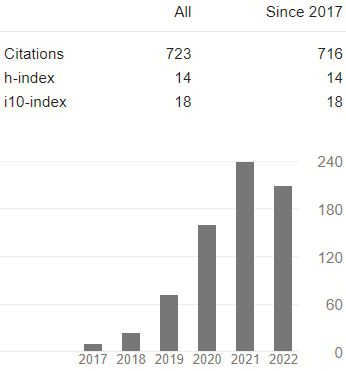PENGARUH HUMAN CAPITAL (LABOR INCOME) TERHADAP EXPECTED STOCK RETURNS
DOI:
https://doi.org/10.25170/jara.v12i1.58Keywords:
premium, panel data, idioscyncratic riskAbstract
This research intended to analyse the use of premium as the proxy of human capital (labor income) in the industry level as one of the factors to measure the expected stock returns other than market, smb, hml, umd and liquidity variable that can be applied in Indonesia.The analysis coveres the human capital (labor income) in the industry level to cross section of stock return and the effect of human capital (labor income) to idiosyncratic risk in the asset pricing model. It usesincome percapita to measure the premium variabel in the period of 2001 – 2011 and 30 stocks portfolio chosen based on the biggest market capitalization value in six sector in the period of 2001 – 2011.
References
Carhart, M. M. (1997). On persistence in mutual fund performance. Journal of Finance 52, 57-82.
Davis, S. J., dan Willen, P. (2000). Occupation-level income shocks and asset returns: Their covariance and implications for portfolio choice, NBER Working paper 7905, University of Chicago.
Eiling, E. (Februari 2013). Industry-specific human capital, and the cross sections of expected stock returns. Journal of Finance, vol. 68, issue 1, 43-84.
Fama, E. F., dan French, K. R. (June 1993). The cross section of expected stock returns. The Journal of Finance, vol. 47, issue 2, 427-465.
Fama, E. F., dan MacBeth, J. D. (May – June 1973). Risk, returns and equilibrium: Empirical test.Journal of Political Economy, vol. 81, no. 3, pp. 607-636.
Hady, H. (2004). Manajemen keuangan internasional. Edisi 3. Mitra Wacana Media.
Jagannathan, R., dan Wang, Z. (1996). The conditional CAPM and the cross section of expected returns. Journal of Finance, 51, 3–53.
Jagannathan, R., Kubota, K. dan Takehara, H. (1998). Relationship between labor income risk and average return: Empirical evidence from the Japanese stock market. Journal of Business, 71, 319-347.
King, M., Sentana, E. dan Wadhwani, S. (1994). Volatility and links between national stock markets. Econometrica, 62, 901-933.
Mankiw, Nicholas G. (1986), The equity premium and the concentration of aggregate shocks,Journal of Financial Economics, 17, 211-219.
Markowitz, Harry, March. (1952). Portfolio selection. The Journal of Finance,2012, 7, 1, 77-91
Mayers, D. (1972). Nonmarketable assets and capital market equilibrium under uncertainty. In Michael C. Jensen, ed. Studies in the theory of capital markets.New York: Praeger publishers, pp. 223-248.
Pastor, L., dan. Stambaugh, R. F. (2003). Likuidity risk and expected stock teturns. Journal of Political Economy, 111, 642-685.
Santos, T., dan Veronesi, P. (2006). Labor income and predictable stock returns. Review of Financial Studies 19, 425-442.
Ross A. Sthephen (1976), The Arbitrage Theory of Capital Asset Pricing, Journal of Economic Theory, 13, 341-360.
Downloads
Published
Issue
Section
License
Authors who publish with this journal agree to the following terms:
- Authors retain copyright and grant the journal right of first publication with the work simultaneously licensed under a Creative Commons Attribution-ShareAlike 4.0 International License that allows others to share the work with an acknowledgment of the work's authorship and initial publication in this journal.
- Authors are able to enter into separate, additional contractual arrangements for the non-exclusive distribution of the journal's published version of the work (e.g., post it to an institutional repository or publish it in a book), with an acknowledgment of its initial publication in this journal.
- Authors are permitted and encouraged to post their work online (e.g., in institutional repositories or on their website) prior to and during the submission process, as it can lead to productive exchanges, as well as earlier and greater citation of published work.














